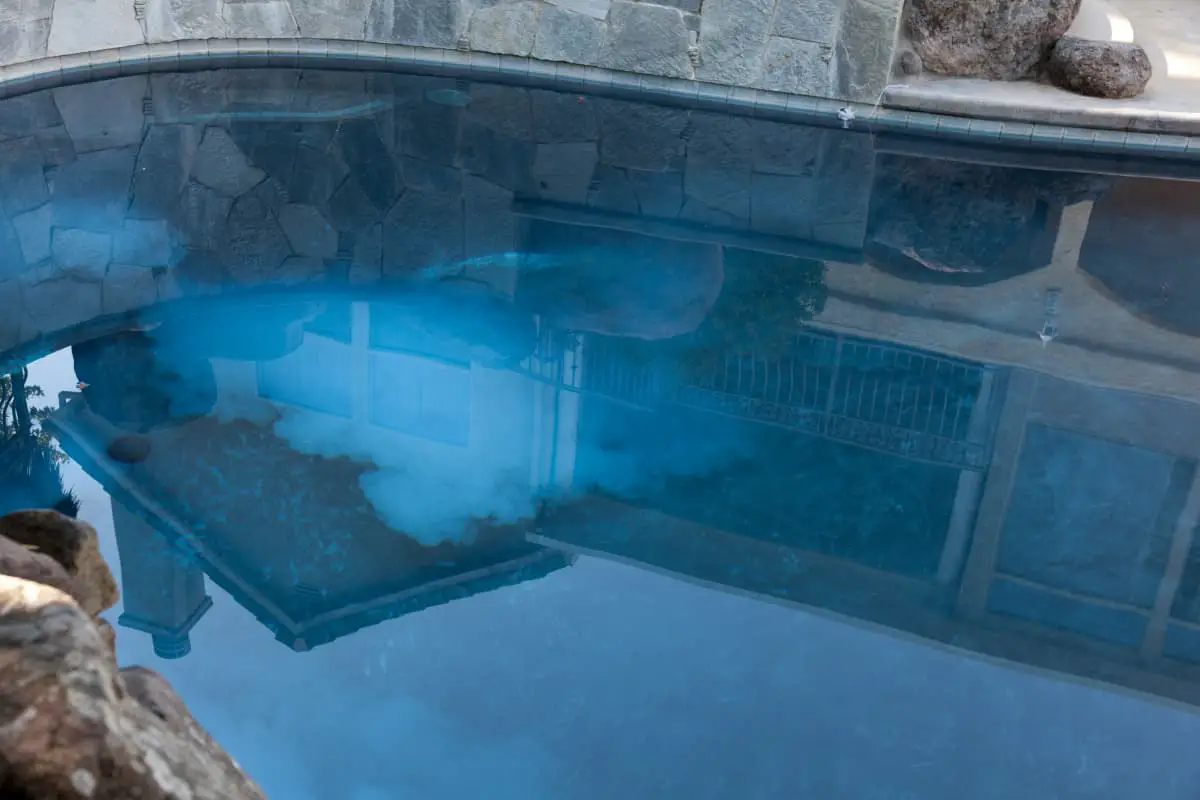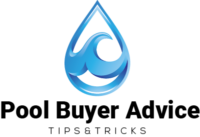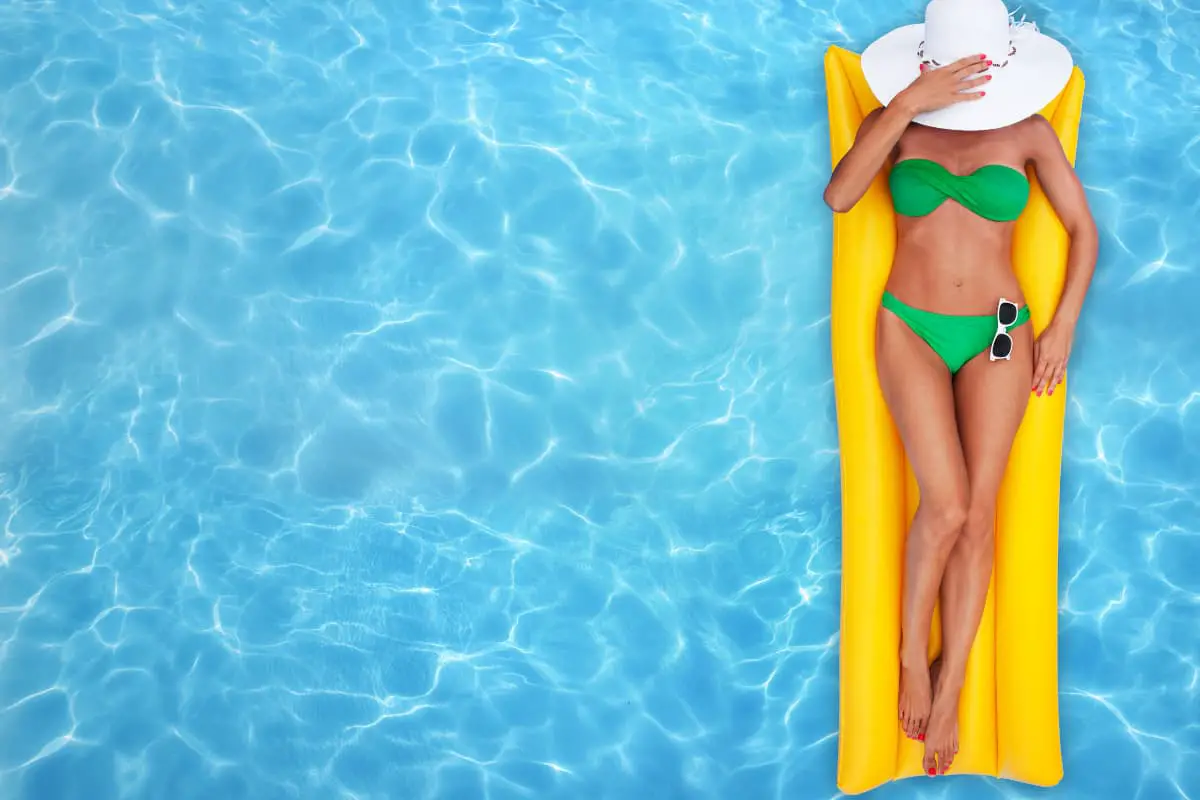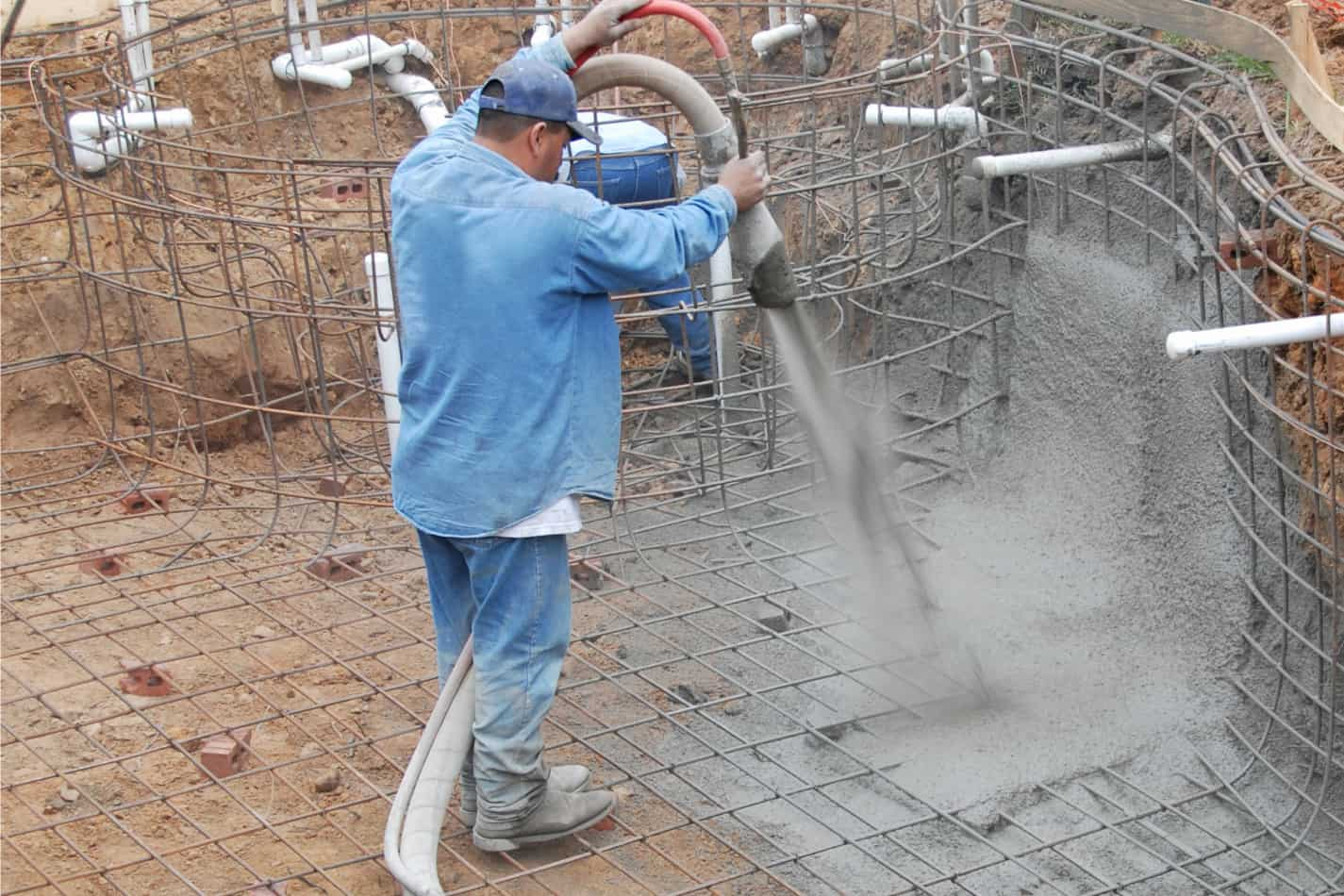Home Pool Shocking 101: All You Need to Know to Start

As an Amazon Associate I earn from qualifying purchases.
Pool shock is a type of chlorine that is used to keep pool water clear and free of algae. It can be found in liquid or tablet form, but it’s important to know how much you need for your swimming pool before purchasing any.
In this blog post, we will explore what pool shock does and all the different types that are available so you can find the best one for your needs!
Learn How to Manage Your Pool and Hot Tub
Frustrated trying to keep your pool clear? Feeling confused about when to add the right chemicals? Get the perfect easy-to-use, illustrated ebook and video course today!
Why Do I Need To Shock My Pool?
For most new pool owners shocking a pool is new and not well understood. Pool shock is a type of chlorine that is used to keep pool water clear and free of algae.
You have to shock a pool when the chlorine level is too low. Shock treatments are also necessary when you want to change the color of your pool (like when it greens from algae), or if there’s a high concentration of organic material in the water, like when kids or even adults pee in it.
The shock helps to level out the chlorine in your pool so it can break down organic material.
What Is Pool Shocking?
Pool shock is a type of chlorine that is used to keep pool water clear and free of algae. Chlorine comes in different types including liquid or tablets, but it’s important to know how much you need for your swimming pool before purchasing any.
The most popular use for shock treatment is when the ratio of chloramines (chlorine molecules combined with ammonia) exceeds 0.035 mg/L.
This can be caused by not running the filter on a regular basis, over-treating water with too many chemicals, or letting rainwater mix into the system after heavy nonstop rainfall where there was an increased risk of contamination from bacteria, animal waste, pesticides and fertilizers.
When these levels reach above .035mg/l we recommend shocking your pool with a chlorine shock product.
When Should I Shock My Pool?
The timing of the shock treatment varies depending on the pool and what you are trying to achieve. Shock treatments should be carried out when either levels of chloramines reach .035 mg/L or higher, or if your water is cloudy.
If you do not have a chlorine test kit, it’s recommended that you shock your pool once every three months for maintenance purposes.
Best Time of Day to Shock Your Pool
The Best Time To Shock Your Pool Is In The Morning Or Late Evening, When Chlorine Levels Are Naturally Lower And There’s Less Chance Of Sunshine Interfering With Treatment Process
The best time of day to shock your pool is when the sun is not shining on it. The best time to shock your pool is in the morning or late evening, when chlorine levels are naturally lower and there’s less chance of sunlight interfering with the treatment process.
Can You Over Shock a Pool?
While shocking is a smart move in many cases it should not be overdone, as it can lead to too high levels of chlorine being present in the water. So what happens if you put too much shock in your pool?
If you over-shock your pool you may find that the water becomes cloudy or foamy. For this reason, it’s best to keep chlorine levels between 0.20 and 0.50 mg/L for a pool shock treatment.
If you over shock your pool you will want to add more water to dilute the over-chlorinated pool water and get it back to the required levels.
What is Pool Shock Used For?
Pool shock is used to keep pool water clear and free of algae. It can be found in liquid or tablet form, but it’s important to know how much you need for your swimming pool before purchasing any.
The most popular use for shock treatment is when the ratio of chloramines (chlorine molecules combined with ammonia) exceeds 0.035 mg/L: this can be caused by not running the filter on a regular basis, over-treating water with too many chemicals, or letting rainwater mix into the system after heavy nonstop rainfall.
This can lead to an increased risk of contamination from bacteria, animal waste, pesticides and fertilizers. When these levels reach above .035mg/l we recommend shocking your pool with a chlorine shock product.
How Much Pool Shock Do You Need?
Pool shock is measured in parts per million (ppm). The amount of chlorine that you need for the size of your pool will depend on how many people regularly swim and what kind of filter system you have, but here are some typical guidelines:
- A 20 x 40-foot residential pool usually needs about 15 ppm;
- A 25 x 50-foot commercial swimming pool typically requires 30 to 35 ppm.
For an average deck or patio tub needing sanitizing approximately every four hours, the dosage should be around five mg/L – which would typically require one tablet from a container.
Are Chlorine and Pool Shock the Same Thing?
While shocking a pool and chlorinating a pool they have some differences in effect. Shock treatment is often used when chloramines exceed 0.035 mg/L while chlorine levels are lower, as shock can help to stabilize the water and prevent any algae or bacteria from forming in your pool.
Chlorine on the other hand is an oxidizer which will kill off all of these things – it’s usually recommended for use if you’re trying to sanitize a pool that has already been cleaned with shock treatments and you want to make sure there isn’t anything left living swimming around in it!
What Does Shock do to a Pool?
Shock is there to help the pool keep it’s water safe and clear. When the chloramine levels in a pool reach above 0.035 mg/L, shock is usually recommended to help stabilize the water chemistry for your swimming pleasure!
What are Chloramines?
Chlorine gas combines with ammonia found in urine (or other organic matter) and creates chloramines; these compounds tend to cause the water to turn cloudy or clear. Shock treatments help to stabilize chloramines in a pool on an ongoing basis, preventing any accidental outbreaks of algae and bacteria growths from becoming dangerous due to untreated waters.
How Often Should You Shock Your Pool?
Shock is recommended by most for use once every three months when maintenance needs are concerned; it’s best applied at night time so that sunlight doesn’t interfere with treatment process results!
What Impact Does Pool Shock Have on PH?
Pool shock causes the pool ph to be lower. This is because the shock process changes ammonia into nitrite and then to nitrate, which lowers ph levels in water.
What Type of Pool Shock Should I Use?
There are many types or varieties of pool shock that are available for purchase. These can include liquid or tablet form, but it’s important to know how much of the chemical you need for your swimming pool before making a purchase!
Calcium Hypochlorite
Calcium Hypochlorite is a popular pool shock option that is available in tablet form. You should know, however, that calcium hypochlorite tablets are slower acting and can require the pool to be closed for about 12 hours after application before it’s safe for swimmers!
Sodium Dichlor
Sodium Dichlor is used for pool shock when you need to replace a chlorinating system or when the pool is going through some serious chemical imbalance. This form of shock treatment also needs about 12 hours before it’s safe for swimmers, as it will take that long for sodium dichloride crystals to dissolve and release chlorine gas into the water!
Potassium Monopersulfate (Non-Chlorine Shock)
Potassium Monopersulfate is used when you are wanting a non-chlorine based shock due to the fact that some people have a sensitivity to chlorine or are looking for an eco-friendly option. Potassium monopersulfate is only released in gas form, so it’s not as effective at sanitizing pools.
Sodium Hypochlorite (Bleach or Liquid Shock)
Sodium Hypochlorite is a liquid shock option that is perfect for use when chlorine levels are low and you need to quickly get your pool water clean. This form of shock treatment will usually take about one hour before the chemical dissipates, but it’s very effective in sanitizing your pool without using any other harmful chemicals!
Should I Brush My Pool Before Shocking It?
When thinking about shocking your pool, it is important to start by brushing your pool first. A brush can help loosen debris that would otherwise stick and clog up the circulation system if put in contact with chlorine.
Brushing also helps redistribute chemicals already on the surface of your swimming pool, preventing any one area from absorbing too much or none at all; a good rule-of-thumb is to brush for at least 30 minutes.
Should I Backwash the Filter After Shocking My Pool?
After completing the shock you may want to backwash your filter. Backwashing the pool filter is important as it cleans and removes debris from the system, ensuring that water can circulate through properly while maintaining cleanliness of the swimming pool.
What Happens if You Swim in a Shocked Pool?
Many people try to enter their pool too soon after shocking it, unaware that it is still toxic. Shock creates a chlorine residual as well as some cyanuric acid which can irritate your skin and make you feel nauseous if ingested or touched.
This is definitely not good for you nor your pool.
Can I use Pool Shock in a Spa?
Yes! You can use poison to help sanitize your spa water and keep it clean as well, just make sure to use a shock-specific product. Choosing to use shock in your spa is a great way to ensure that the surface of your spa is sanitized and that bacteria cannot form on its surfaces.
Final Thoughts on Pool Shock
One of the most important things to keep your pool healthy is knowing when and what type of pool shock you need. It’s also important that you know how much, as well as how often it should be applied!
The chemical itself can come in a variety of different forms depending on where we live- so make sure you consult with us for all those questions before ordering any from Amazon or your local hardware store.
Do YOU get in too soon after shocking your pool? Let me know in the comments below!”



